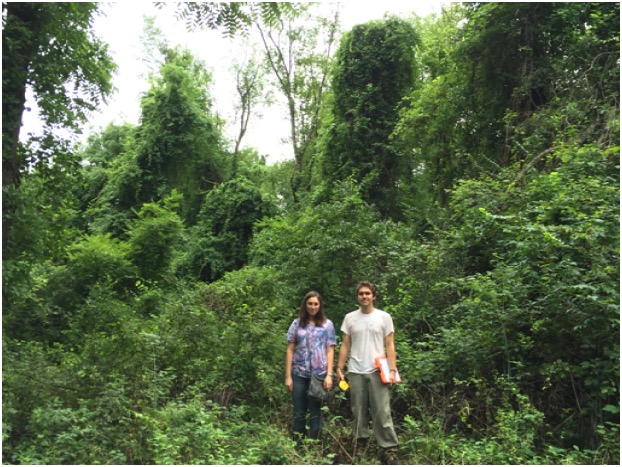American chestnut as a management strategy for vine-dominated light gaps in temperate forests
Professor Meg Ronsheim
Jessie Prutisto-Chang, Addison Tate, and Takunda Maisva

Invasive vines such as oriental bittersweet and porcelain berry tend to dominate forest light gaps, shifting the forest’s successional trajectory or delaying succession for decades. Vines are becoming more prolific in temperate forests due to forest fragmentation, higher atmospheric CO2 levels, and milder winters caused by climate change. Forest canopy gaps are increasing in abundance with the arrival of the emerald ash borer, an invasive beetle that kills ash. Our project examines the potential for mitigating vine gap expansion through shade management by planting American Chestnut trees. In 2016 we cleared six 10x10m vine-dominated gaps and planted American Chestnut in three plots, paired with three unplanted control plots. In anticipation of the emerald ash borer, we identified six ‘pre-gap’ plots that contained white ash, and planted American Chestnut in three of these plots, paired with three unplanted control plots. In 2017 we returned to these sites to check tree survival and document changes in species composition. We will compare the successional trajectories of the planted and unplanted plots to assess the effectiveness of this management strategy.